World Crafter. Nikki. Napier, New Zealand.
World Crafters are people who make things in different parts of the world. Some turned their hobby into a profession, some are balancing a day job with small crafty business, some chose to keep their hobby and just enjoy making, creating and giving. Behind each stitch is a story…Some very long time ago, I saw knitwear pieces by Nikki Gabriel and I knew immediately that the professional story of this knitwear designer just has to be told. Nikki Gabriel, a fashion designer, books and patterns writer, creator of sustainable yarn, is taking us today into her world of textile in the "Land of the Long White Cloud", which is fascinating, admirable and oh-so-inspiring!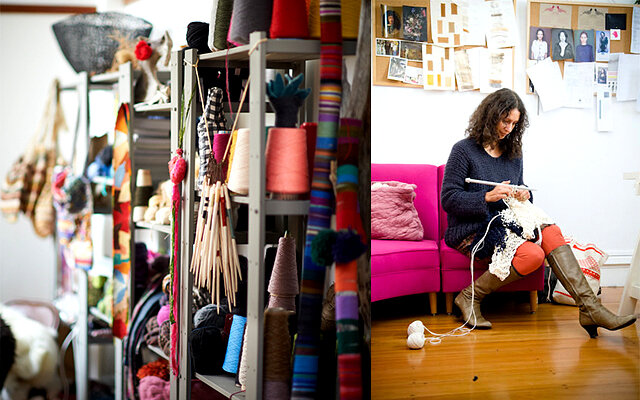 How did you become interested in fiber arts? Do you remember your very first fiber experience?I’ve always loved clothes, which led to my interest in making fabrics and textiles later in life. I realized I was actually good at making things because I have the temperament to sit for hours on my own to work - one of the prerequisites of fiber experience.Did you always know that you want to make a career in fiber arts? When did this realization first come?In 2001, after I graduated I was selling my knitwear ranges to stores, producing up to 600 items per season, employing makers to work in the studio. But I think I always thought it was an unrealistic occupation until I was invited to be in the Endless Garment exhibition in 2010. This show of knitted fashion included designers Issey Miyake, Sandra Backlund, Walter Van Bierendonck, and a whole list of international designers who I had considered as my heros – and now that I was showing my work alongside them I had to pinch myself. I think I realized it only then that I had a real career in textile design.
How did you become interested in fiber arts? Do you remember your very first fiber experience?I’ve always loved clothes, which led to my interest in making fabrics and textiles later in life. I realized I was actually good at making things because I have the temperament to sit for hours on my own to work - one of the prerequisites of fiber experience.Did you always know that you want to make a career in fiber arts? When did this realization first come?In 2001, after I graduated I was selling my knitwear ranges to stores, producing up to 600 items per season, employing makers to work in the studio. But I think I always thought it was an unrealistic occupation until I was invited to be in the Endless Garment exhibition in 2010. This show of knitted fashion included designers Issey Miyake, Sandra Backlund, Walter Van Bierendonck, and a whole list of international designers who I had considered as my heros – and now that I was showing my work alongside them I had to pinch myself. I think I realized it only then that I had a real career in textile design.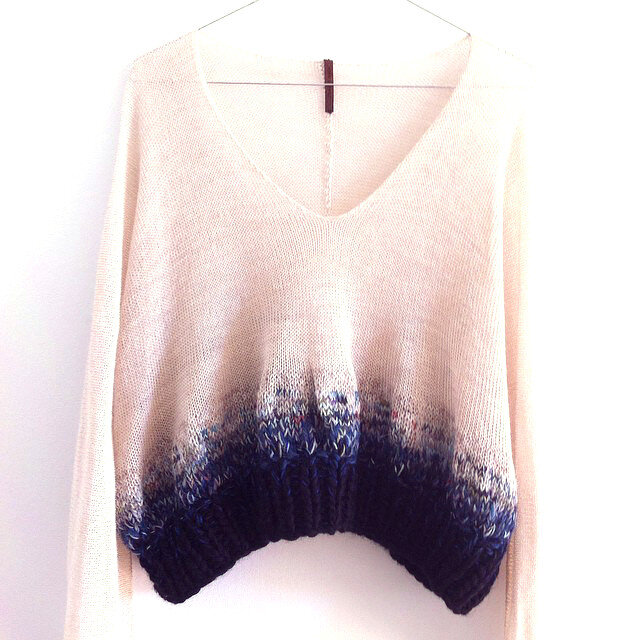 Could you please share your experience at RMIT? I had enrolled in the Diploma of Studio Textiles at RMIT which gave me the option of learning different textile techniques of printing, weaving, knitting and hand-making techniques such as felting, dyeing, shibori, etc., which gave me great skills to follow on with.
Could you please share your experience at RMIT? I had enrolled in the Diploma of Studio Textiles at RMIT which gave me the option of learning different textile techniques of printing, weaving, knitting and hand-making techniques such as felting, dyeing, shibori, etc., which gave me great skills to follow on with. You created knitwear lines for many fashion designers and for your own knitwear label . What is the main difference between working for your own label and for other brands?I have a brief to follow when working on commissions, but in reality I have to set a brief and time-line for my own label also; things like season, yarn, price point, productivity, etc. But the exposure of the work is far wider when creating product for high-end professional designers and costume houses. And the excitement of working for large production can be wonderfully delirious. Contemporary Dance, Theatre, Ballet, or big Ready-to-wear shows are filled with glamour, wonder and fantasy!
You created knitwear lines for many fashion designers and for your own knitwear label . What is the main difference between working for your own label and for other brands?I have a brief to follow when working on commissions, but in reality I have to set a brief and time-line for my own label also; things like season, yarn, price point, productivity, etc. But the exposure of the work is far wider when creating product for high-end professional designers and costume houses. And the excitement of working for large production can be wonderfully delirious. Contemporary Dance, Theatre, Ballet, or big Ready-to-wear shows are filled with glamour, wonder and fantasy! I remember my first experience of the atelier at the Australian Ballet Dance Company in Melbourne, when I was using their dye lab. To get to the lab I had to walk past the costume archive, and the work-stations of shoe makers and milliners, the space filled with fabrics, ribbons, feathers, and all sorts of artisan tools. It was fiber heaven.
I remember my first experience of the atelier at the Australian Ballet Dance Company in Melbourne, when I was using their dye lab. To get to the lab I had to walk past the costume archive, and the work-stations of shoe makers and milliners, the space filled with fabrics, ribbons, feathers, and all sorts of artisan tools. It was fiber heaven.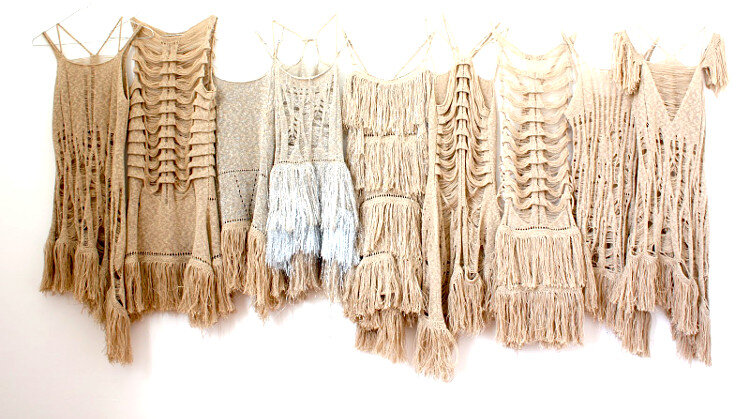 In 2009 you've developed a sustainable yarn WOOLI. I know that one of the main criteria for you was its sustainability. Could you share a little bit about the process of creating a yarn? When I looked into yarn production the choice was either small hobby farm spinning mills or large factories, neither of which suited the production quantities I wanted to commit to. I discovered a natural fiber spinning mill in New Zealand that ran smaller production runs but the product they made looked too similar to what already existed on the market. To get a point of difference I asked if I could use up their waste yarn which comprised of a rainbow of different fibers; all types of wools, alpacas, silks, cashmeres, possum into the same yarn. I suppose sustainability is a by-product of the way I think around things; I’m always searching for the best possible experience with what is at hand to create a design solution, and that integrity translates into what’s considered good.
In 2009 you've developed a sustainable yarn WOOLI. I know that one of the main criteria for you was its sustainability. Could you share a little bit about the process of creating a yarn? When I looked into yarn production the choice was either small hobby farm spinning mills or large factories, neither of which suited the production quantities I wanted to commit to. I discovered a natural fiber spinning mill in New Zealand that ran smaller production runs but the product they made looked too similar to what already existed on the market. To get a point of difference I asked if I could use up their waste yarn which comprised of a rainbow of different fibers; all types of wools, alpacas, silks, cashmeres, possum into the same yarn. I suppose sustainability is a by-product of the way I think around things; I’m always searching for the best possible experience with what is at hand to create a design solution, and that integrity translates into what’s considered good.
You can buy WOOLI yarn online at www.estaustralia.com
Two years later you published a book "Handknitter's Yarn Guide". Could you tell us about it, please? Who would find this book useful?Knitting is generally associated with wool. As the book shows, there are 80 other fibers that can be knitted with. I was offered the author commission from Rotovision in the UK to work on this book. It took many months to research the facts of all the types of knitting fibers. The book therefore has only a little of my narrative voice, but it is an extremely practical and factual guide to knitting yarns that every knitter would find useful. I did learn a lot in the process as I swatch tested every fiber that I wrote about, and there were many I hadn’t used before. The book is published by St Martins Press in the USA, Search Press in the UK and Harper Collins in Australia/New Zealand.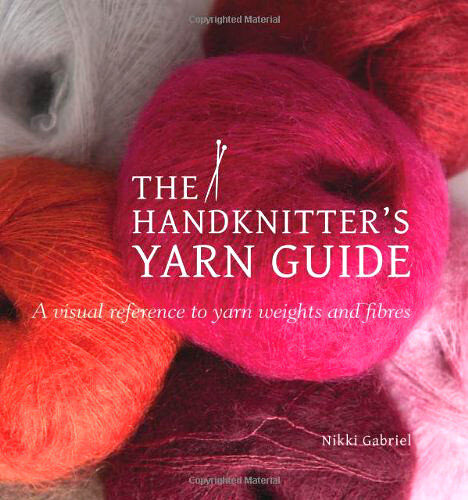 You are a hand knitter and machine knitter. Machine knitting is often misunderstood and even underestimated among hand knitters. Some people don't consider knitwear made on the knitting machine as "handmade". As an experienced hand knitter and machine knitter, could you tell us please what is similar and what is different between these two crafts? As a designer, for me knitting constitutes the whole range of ways it can be produced. Hobby knitters can and do create on knitting machines, but I know them to be mostly designer’s tools. From what I have learnt, there are different types of knitting machines, some of which are less automated than others. Small knitting machines were made for the domestic market from the 1950’s and mine is from the 1970’s. They still use these machines at textile schools for students to learn on, and to understand the basic mechanics of larger industrial machines. But the knitting machine is like a potter’s wheel. To use it well it takes a certain skill, nuance, practice, and is directed by the maker’s hands. I use my machine in ways that requires manual operation as machines don’t design my patterns, I design my own patterns for the machine to make; manually manipulating stitches by moving them around (cabling), omitting or reintroducing (distressing), taking up or down (tucking), etc, and all is finished by hand; i.e. joining seams, casting off, securing threads… its extremely labour intensive. That’s what I mean by "handmade on the knitting machine".
You are a hand knitter and machine knitter. Machine knitting is often misunderstood and even underestimated among hand knitters. Some people don't consider knitwear made on the knitting machine as "handmade". As an experienced hand knitter and machine knitter, could you tell us please what is similar and what is different between these two crafts? As a designer, for me knitting constitutes the whole range of ways it can be produced. Hobby knitters can and do create on knitting machines, but I know them to be mostly designer’s tools. From what I have learnt, there are different types of knitting machines, some of which are less automated than others. Small knitting machines were made for the domestic market from the 1950’s and mine is from the 1970’s. They still use these machines at textile schools for students to learn on, and to understand the basic mechanics of larger industrial machines. But the knitting machine is like a potter’s wheel. To use it well it takes a certain skill, nuance, practice, and is directed by the maker’s hands. I use my machine in ways that requires manual operation as machines don’t design my patterns, I design my own patterns for the machine to make; manually manipulating stitches by moving them around (cabling), omitting or reintroducing (distressing), taking up or down (tucking), etc, and all is finished by hand; i.e. joining seams, casting off, securing threads… its extremely labour intensive. That’s what I mean by "handmade on the knitting machine".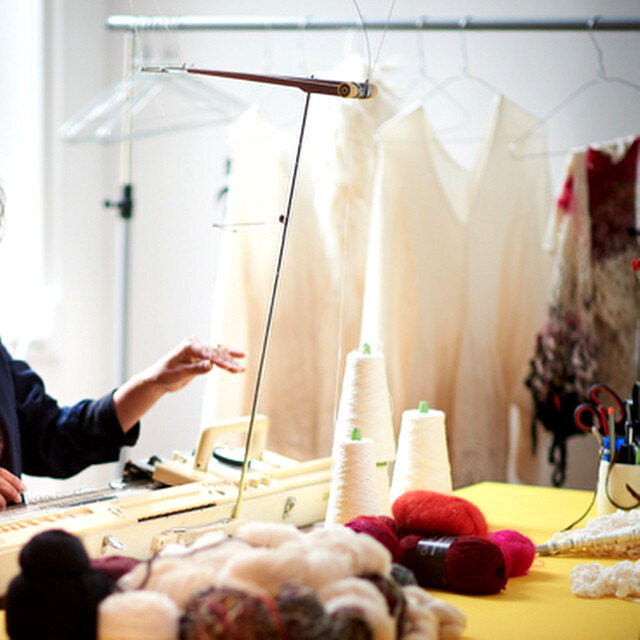 I absolutely love your idea of Construction Knitting Patterns! I think it is such a fresh look at the conventional knitting pattern. Could you, please, tell us more about it? How is it different from the traditional knitting pattern? The Construction Knitting Patterns developed out of an idea to create another type of product that was more accessible than the high price point knitwear I was producing. When I looked into this market there was very little that aligned knitting with it being a design process, as it just seemed to be surrounded by the stigma that it was an old-fashioned craft. Being a knitter and a designer, I was determined to portray it differently. And rather than creating another type of knit-by-following-the-pattern project I wanted to engage the user in a knit-by-designing-the-pattern project. To do this, I needed to look at the fundamentals of knitting, and the fundamentals of design, and merge them. This translated to knitting basic geometric shapes in basic stitch structures, with a visual guide to assembling the knitted shapes to make garments. The shapes can become parts that the knitter can adapt, omit and re-assemble in as many ways they see fit to play with. Although the patterns are written for the yarn that I produce, the patterns can be adapted to any type of yarn. As part of the idea of making knitting more accessible, the patterns are suitable for beginners.
I absolutely love your idea of Construction Knitting Patterns! I think it is such a fresh look at the conventional knitting pattern. Could you, please, tell us more about it? How is it different from the traditional knitting pattern? The Construction Knitting Patterns developed out of an idea to create another type of product that was more accessible than the high price point knitwear I was producing. When I looked into this market there was very little that aligned knitting with it being a design process, as it just seemed to be surrounded by the stigma that it was an old-fashioned craft. Being a knitter and a designer, I was determined to portray it differently. And rather than creating another type of knit-by-following-the-pattern project I wanted to engage the user in a knit-by-designing-the-pattern project. To do this, I needed to look at the fundamentals of knitting, and the fundamentals of design, and merge them. This translated to knitting basic geometric shapes in basic stitch structures, with a visual guide to assembling the knitted shapes to make garments. The shapes can become parts that the knitter can adapt, omit and re-assemble in as many ways they see fit to play with. Although the patterns are written for the yarn that I produce, the patterns can be adapted to any type of yarn. As part of the idea of making knitting more accessible, the patterns are suitable for beginners.
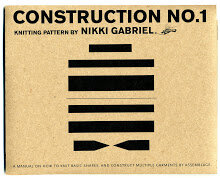 |
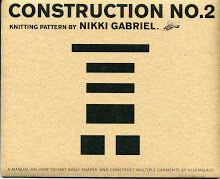 |
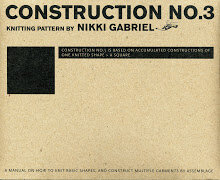 |
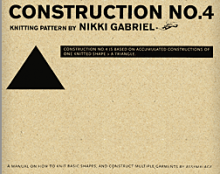 |
Nikki is offering a special promotion on free worldwide shipping on all Construction Knitting Patterns until the end of February in her Etsy shop! It's a great chance to try innovative and exclusive designs!I know that you don't offer the construction patterns as downloads, because it's important for you to preserve "the enterprise of the graphic designer, the printer and the postie". I really admire that. Do you think it gives a different feeling to the pattern when it's printed and physically sent to the knitter?Well downloads don’t suit the patterns as it is divided into sequences of knitting which just doesn’t translate well on screen. But - Oh my, there is so much that goes into the design considerations of printing a product; choosing the right printing press to work with in the first place, then the paper stock with the right feel that saturates the ink just enough to reflect the bespoke experience of the knitting patterns. Then there’s the consideration of the folds in the paper and the cover to enhance that experience. All that attention to detail is what makes a product special in my opinion. And yes, isn’t it great to get a parcel hand delivered by a postie!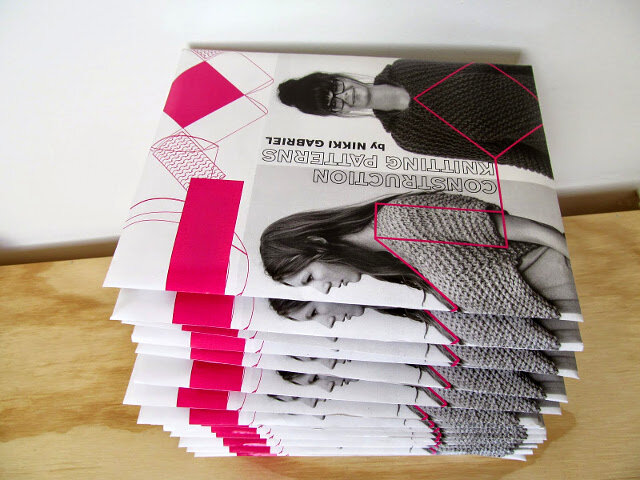 Could you, please, tell us about your corner of the world? Is it a creative and inspiring place?New Zealand is beautiful and I’m surrounded by dramatic landscapes. The native name of the country is Aetoroa, meaning "Land of the Long White Cloud". This nature inspires me, but also gives me the space to isolate myself, and work alone. But having said this, I’m inspired by big cities and I also found isolation and space to work in the bustling and creative inner city of Melbourne as well. I think the corner of my world is in my imagination (and my laptop).
Could you, please, tell us about your corner of the world? Is it a creative and inspiring place?New Zealand is beautiful and I’m surrounded by dramatic landscapes. The native name of the country is Aetoroa, meaning "Land of the Long White Cloud". This nature inspires me, but also gives me the space to isolate myself, and work alone. But having said this, I’m inspired by big cities and I also found isolation and space to work in the bustling and creative inner city of Melbourne as well. I think the corner of my world is in my imagination (and my laptop).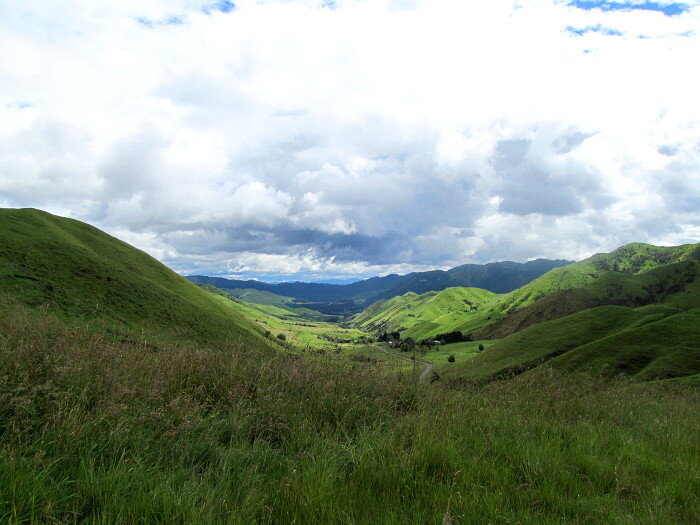 You manage to combine a career of both a fashion designer and a DIY designer (developing yarn, writing books and patterns for hobby knitters). How does the process of creating a fashion line and the process of designing for hobby knitters differ? Do you have the preference or you enjoy both equally?The fashion knitwear and DIY markets operate on different spheres, but the fashion writer Sandy Black states that, the knitting pattern is a “trickle-down of high fashion”. I also believe that because of the resurgence of craft, there is an emergence of new indie-commerce models of production that are closing the gap between the industrial and the domestic product. So too, the boundaries between the manufacturer, the designer and the consumer is becoming blurred. I don’t have a preference of which type of design I prefer, I just see the role of the designer changing as a reflection of these things.
You manage to combine a career of both a fashion designer and a DIY designer (developing yarn, writing books and patterns for hobby knitters). How does the process of creating a fashion line and the process of designing for hobby knitters differ? Do you have the preference or you enjoy both equally?The fashion knitwear and DIY markets operate on different spheres, but the fashion writer Sandy Black states that, the knitting pattern is a “trickle-down of high fashion”. I also believe that because of the resurgence of craft, there is an emergence of new indie-commerce models of production that are closing the gap between the industrial and the domestic product. So too, the boundaries between the manufacturer, the designer and the consumer is becoming blurred. I don’t have a preference of which type of design I prefer, I just see the role of the designer changing as a reflection of these things.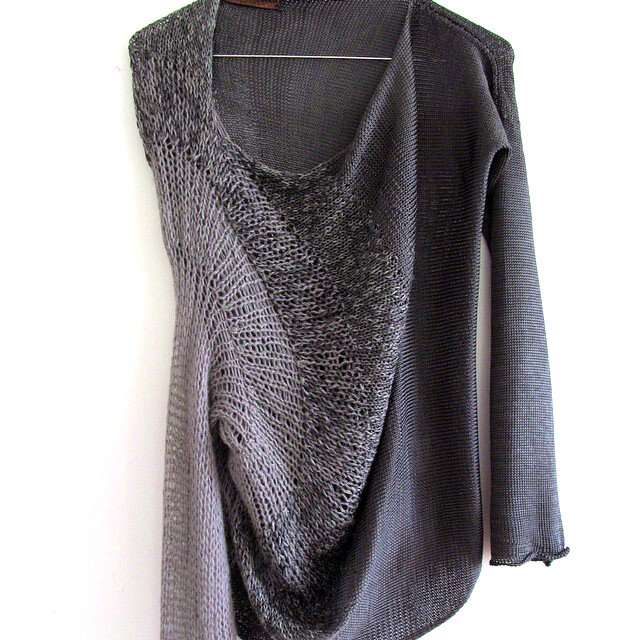
Dear Nikki, thank you so much, for sharing your story with us!
You can find Nikki at her blog nikkigabriel.blogspot.co.nz and website www.nikkigabriel.com. Make sure to follow Nikki on Instagram to see the latest updates. Nikki's exclusive Construction Knitting Patterns are available in her Etsy shop. Nikki's book is available on Amazon - "The Handknitter's Yarn Guide". You can find handmade knitwear by Nikki Gabriel at www.taylorboutique.co.nz, www.arohaandfriends.co.nz, www.theshelter.co.nz
RELATED POSTS


